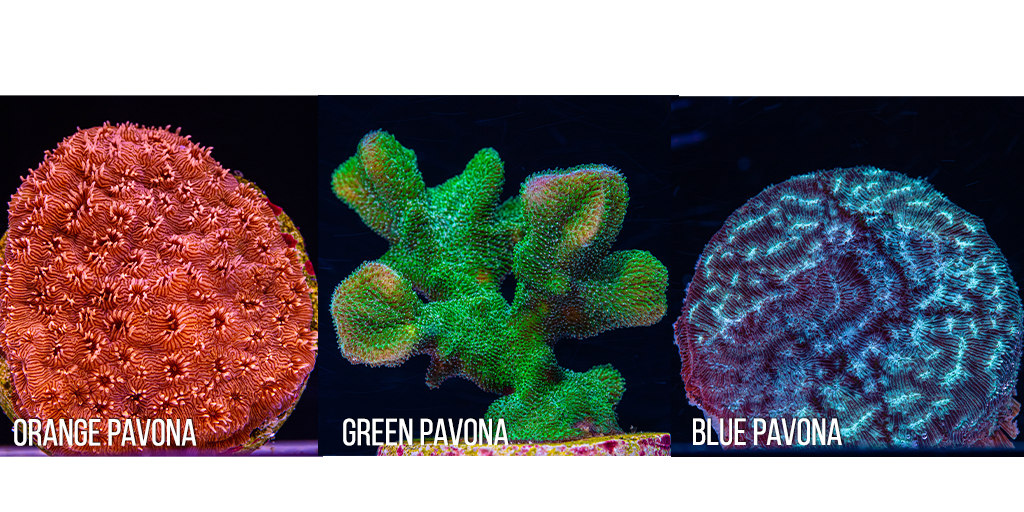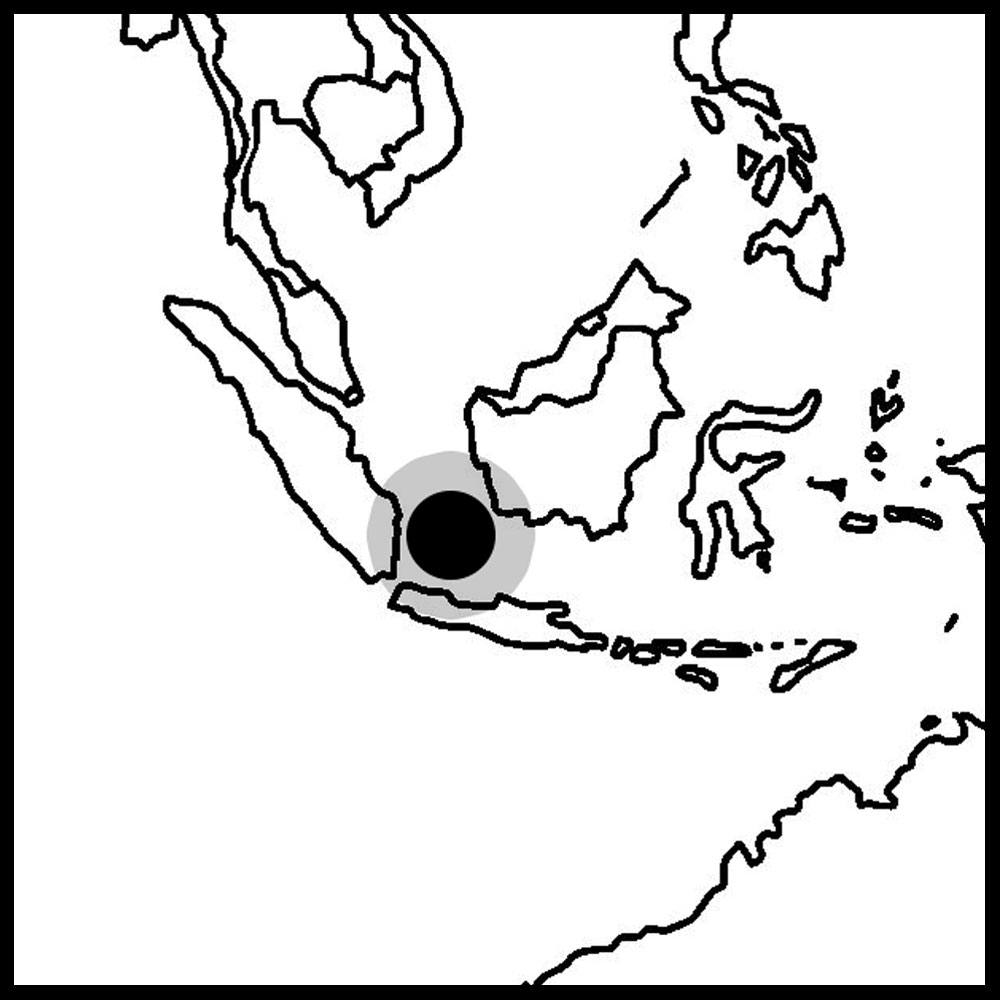Filter
My Wish List
![]() Pavona Coral Care
Pavona Coral Care
Pavonas, also known as Cactus Coral, are not only one of the most beginner-friendly SPS corals out there, but also one of the most beginner-friendly corals in general.
Although Pavona are lumped in with SPS corals, they tend to be far easier to care for in the sense that they are less sensitive to fluctuations in water quality, and are generally less demanding than others in this category. What I mean by that is water conditions that would cause more sensitive SPS, such as Acropora or Montipora, to discolor or even die back, wouldn’t cause any noticeable changes in a neighboring Pavona.
So for the beginning hobbyist that is looking to dabble in the SPS world, the Pavona would be a good choice to “test the waters” so to speak.
![]() Growth Patterns
Growth Patterns
I’ve seen 2 main types of growth patterns from Pavona: A flat, encrusting growth; and a vertical, plating growth. Usually color variations like green grow plates, color variations like blue normally stay as an encrusting type, and orange Pavona usually fall somewhere in the middle and can go in either direction.

In terms of coloration I’ve only seen a handful, however I’m sure as this hobby progresses, more colorful variants are sure to spring up. The ones we have here at Tidal Gardens include greens, purples, oranges, and even some uncommon ones such as the freak hair variety that has a magenta base and yellow tentacles.
What can make it hard to differentiate at times, is the fact that the texture of the Pavona can vary slightly, ranging from a more flat appearance to a “furry” one. It makes it hard to see what the polyps actually look like.
![]() Location
Location
Pavona are mainly located in the Indo-Pacific region near the islands of Fiji, Tonga, Soloman Islands, and even further south near the Great Barrier Reef on the coast of Australia.

Now that we’ve discussed the outward appearance of the Pavona, let’s dive into some care tips, starting with water flow.
![]() Water Flow
Water Flow
Pavona do best in medium to high flow and this is for three main reasons. First, this type of water flow carries food into the colony a lot better than a lower flow, more on that in a little bit. Secondly, it keeps detritus from forming on the colony. When detritus settles on the coral, it can die back and unfortunately the different growth forms can all fall victim to these dead flow areas. Lastly, from an aesthetic viewpoint, it just looks nicer to see the tentacles blow around.
One of the major criticisms of SPS dominated aquariums is that lack of movement of the corals themselves. You kind of have to find movement when you can and accentuate that movement. In the more furry examples of Pavona, a stronger current will produce a stronger aesthetic.
![]() Lighting
Lighting
For lighting, Pavona can be kept in medium to high light conditions, but personally I would stay towards the medium side of that spectrum, as opposed to the high side. I normally shoot for around 100 PAR. I don’t see a lot of benefits for going higher than that because the coloration of Pavona remains fairly consistent. It’s not like an Acropora or Montipora that can look like a completely different coral under different light. Providing a Pavona with more light than it really needs can lead to bleaching.
Low Light


Lighting is a loaded topic, so for a more in-depth discussion of lighting, please see our Deep Dive article.
![]() Propagation
Propagation
This genus, for the most part, has been propagated extensively in captivity and is an excellent candidate for aquaculture. Pavona are very easy to propagate due to being very brittle, and are also fast growing. It is reasonable to believe that a sustainable harvest can be achieved in time. For more information, check out our video on the subject below.
![]() Feeding
Feeding
Now let’s talk about feeding. To be honest, I don’t go out of my way to feed these guys, but Pavona can be fed if you want. They have small mouths, but they still eat meatier foods that will fit such as minced mysis shrimp or rotifers. If you feed your tank regularly, these corals are pretty good at grabbing food right out of the water column.

If you want to go the extra mile when it comes to feeding, adding amino acids to your regimen will also be very beneficial to your corals.
Amino Acids are simple organic compounds that play a major role in building proteins as well as other biological functions at the cellular level. There are a little over 20 different types of amino acids. Most of them can be synthesized by the organism but some cannot be and must be taken in by feeding. Those amino acids are termed essential amino acids and they vary from species to species. Corals regularly take in available amino acids from the water column so it is easy to provide them with adequate quantities by broadcast feeding an amino acid solution. They are available from any number of commercially available reef supplement manufacturers. This may be the easiest way to feed your corals because as long as amino acids are bioavailable in the water column, the corals will soak them up. If you want to know more about amino acids, I made a video going into great detail about them so check that out below:
![]() Water Chemistry
Water Chemistry
Lastly, let’s talk about water chemistry. Since Pavona are SPS corals, that means that they have a skeletal structure that needs to be cared for with proper calcium and alkalinity levels. Despite Pavona being a pretty hardy coral, it still needs proper amounts of calcium and alkalinity to really thrive in your tank so let’s go into more detail on both of those things.
Starting first with Calcium, it is one of the major ions in saltwater. In the ocean, its level hovers around 425 parts per million (ppm). As a coral grows calcium is absorbed from the water and used to forms its calcium carbonate skeleton.
![]() Alkalinity
Alkalinity
Alkalinity is probably the most important parameter to pay attention to. It is not a particular ion, but rather a general figure of carbonate availability in the water. Technically it is the amount of acid required to lower the pH of saltwater to the point bicarbonate turns into carbonic acid. If you have more alkalinity, it can soak up more acid. Less alkalinity and you have less buffering capacity making the tank more susceptible to chemical changes.
In practice alkalinity tends to be the parameter that fluctuates the most, so if you can only manage one test, test for alkalinity. In natural sea water, the alkalinity of the water measures around 7 or 8 dkh though most salt mixes these days mix up closer to 8 to 9 dkh. Some aquarists like to overload this parameter a little and keep their tanks around 10 or 11 dkh with the belief that having elevated calcium and alkalinity in the water contributes to faster stony coral growth, which is relevant in this case, because even though Pipe Organs are technically soft corals, remember they still have that skeleton to take care of like stony corals do.
Raising both calcium and alkalinity together can be tricky because of how they interact. Calcium ions and carbonate want to react with one another. Addition of a calcium supplements often comes with a corresponding fall in alkalinity levels and vice versa. If you are experiencing this in your systems, it is normal, but wild swings are not. If you are experiencing dramatic swings of calcium and alkalinity every time you use an additive, you may want to look at your Magnesium levels.
![]() Magnesium
Magnesium
So why Magnesium? Magnesium behaves chemically similar to calcium. It can bind up carbonate ions thus increasing the overall bioavailability of alkalinity compounds in the water. If you are tweaking calcium and alkalinity and getting strange results, you may want to make sure it is not your magnesium level that is low. In the ocean, Magnesium sits at about 1350 ppm.
![]() Summary
Summary
Alright that’s a quick overview of Pavona corals. So who is this coral for? I’d say that it’s definitely for the beginning hobbyist that’s looking to dip their toes into the world of SPS, or even for a veteran for the SPS world that’s looking to add a coral with unique growth patterns to a lower part of their reef.
Take care guys, and as always, happy reefing!

